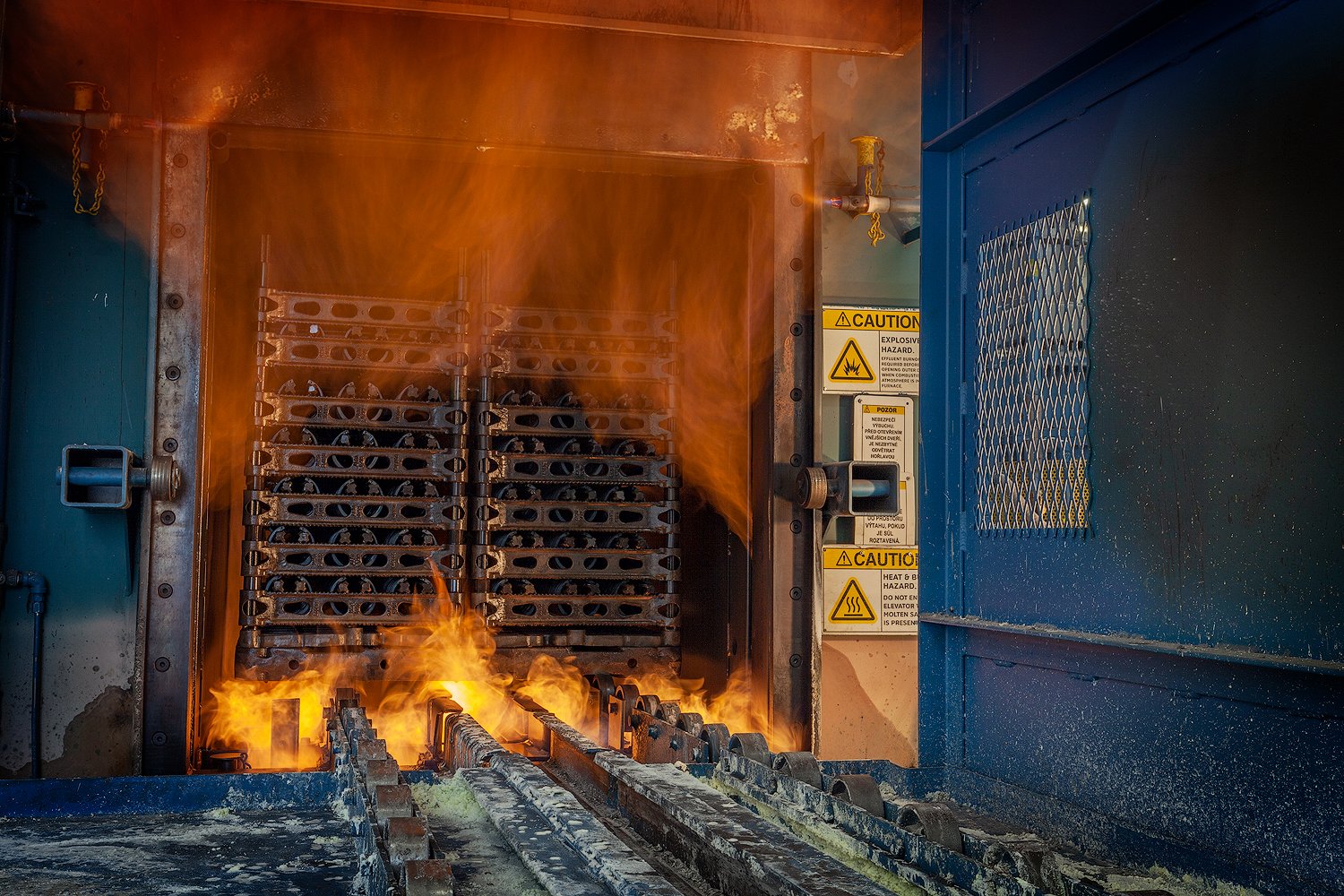Rotor Clip’s strict in-house heat treating processes ensure the highest control over manufacturing, hardness properties and product quality.
When it comes to producing metal fasteners with optimal mechanical properties, Rotor Clip’s heat treatment processes continually demonstrate our company’s metallurgic expertise, ingenuity and commitment to product quality.
Rotor Clip’s engineering and quality control teams have established systems that ensure both heat treating and its inspection can be performed reliably, accurately and repeatedly. They anneal wire to achieve the right workability, and they maintain constant control over every aspect of heat treatment so retaining rings and hose clamps reach their ideal hardness.
Specially built furnaces with computer-controlled feeding mechanisms heat the parts to their proper temperature. Rotor Clip has mastered the austempering method whereby parts cool as they pass through a quenching tank and undergo an isothermal transformation at a predetermined temperature and time. This step gives the parts the hardness, structural stability and mechanical properties that make reliable fasteners.
Every year, Rotor Clip satisfies the Automotive Industry Action Group’s CQI-9 Heat Treatment Assessment, which shows that its heat treatment process continuously improves, prevents defects and reduces variation and waste in the supply chain.
This is further proof that Rotor Clip’s heat treatment process is integral to producing high-quality, reliable products.


CAPABILITIES
- All Rotor Clip carbon steel rings and hose clamps are heat-treated in house using our austempering method.
- Austempering gives retaining rings their desired strength and ductility while minimizing brittleness.
- Skilled personnel with rich metallurgical expertise monitor and control every step of Rotor Clip’s in-line heat treatment processes.
- Stainless steel parts receive vacuum heat treatment.
- Rotor Clip tailors the heat treatment process according to the part’s size, shape and material composition to achieve the desired mechanical properties.
EQUIPMENT
- Parts are heated in one of six specially built in-house furnaces.
- Vacuum furnaces treat stainless steel parts
- Computerized feeding mechanisms regulate the number of parts moving through the multi-zone furnace in a given time frame.
- An oscillating feeder ensures that all parts reach a uniform temperature.
- A molten salt quench tank austempers parts to the desired strength and ductility.
- Parts move through a conveyorized wash tank and hot air dryer before unloading.
CERTIFICATIONS
- An extensive quality policy focuses on meeting and exceeding customer expectations.
- All incoming steel receives careful inspection for responsiveness to heat treatment.
- Rotor Clip maintains strict controls during quenching, austempering and vacuum heat treatment by frequently monitoring loads, temperatures and part quality and making the necessary adjustments.
- AIAG CQI-9 Heat Treatment Assessment compliance. In order to satisfy this annual assessment, Rotor Clip must show that its heat treatment system provides continual improvement, prevents defects and reduces variation and waste in the supply chain. The Automotive Industry Action Group (www.aiag.org) developed this self-assessment as an amendment to IATF 16949.
- Rotor Clip maintains an ISO/TS 16949-accredited test laboratory to check all phases of mechanical and metallurgical properties involved in the manufacture of retaining rings.
- Production lots are traceable from raw material acquisition to shipment, including inspection records.
- Certifications and compliance:

